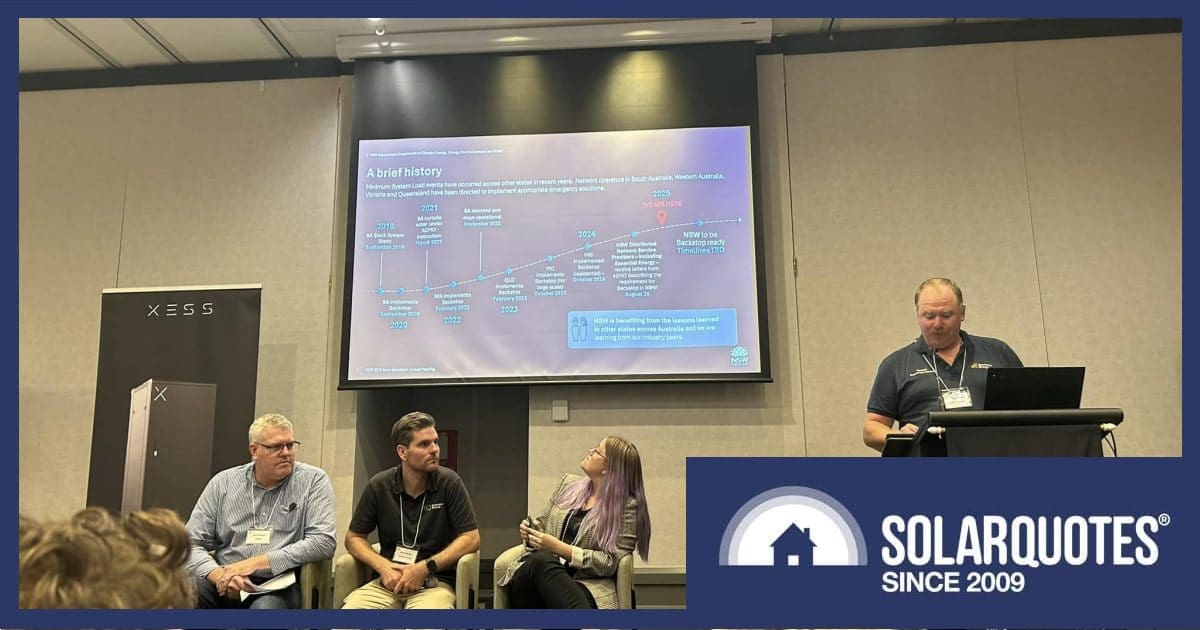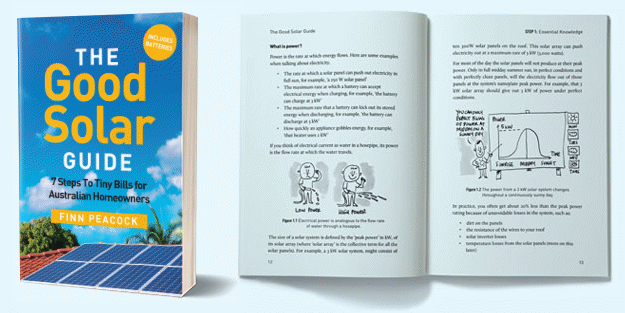
Electricity distributors in New South Wales could soon have the ability to remotely limit or switch off exports from rooftop solar power systems. The prospect has set NSW’s solar industry on edge – and for good reason.
The Emergency Backstop Mechanism will allow Distributed Network Service Providers (DNSPs) to temporarily curtail or shut down solar exports remotely during emergencies. It’s intended to be a last resort option when demand for grid electricity is low and solar energy exports are comparatively high, threatening mains grid stability.
The Mechanism will apply to new or upgraded rooftop solar systems from the date of implementation, expected to be sometime between September and the end of November this year. Existing solar households and businesses will not be affected.
According to the NSW Government, the Emergency Backstop will also incorporate flexible export technologies; enabling higher export limits for compatible systems during periods when a network can cope. South Australia’s experience with flexible exports indicates this could happen much of the time.
A public consultation period on the NSW Emergency Backstop plan finished up on Friday 7 March 2025 and feedback is being reviewed. The consultation paper can be viewed here.
Victoria’s Nightmare Looms Large In NSW
Given the ongoing problems with Victoria’s emergency backstop implementation that commenced in October last year, the NSW solar industry is very concerned about what’s to come according to the Solar Energy Industries Association (SEIA)1.
“If it goes well, it will help stabilise the grid and allow larger systems to be installed,” said the SEIA. “If it goes badly it could cost tens of millions in lost revenue and grind the industry to a halt. Again.”
“Goes well” could probably be applied to the (general) experience in South Australia; whereas Victoria would likely qualify as the poster-child for “goes badly”. But SA has only one DNSP (SAPN), whereas Victoria has five – AusNet, Citipower, Jemena, Powercor and United Energy. New South Wales has three DNSPs – Essential Energy covering regional NSW, Ausgrid with a service area of Northern Sydney, Central Coast and the Hunter; and Endeavour Energy – south west of Sydney.
At its 2025 SEIA Annual Solar Installers’ Meeting held in Sydney last week, a related Q&A session with representatives from the New South Wales Department of Climate Change, Energy, the Environment and Water (DCCEEW), Essential Energy, Ausgrid and Endeavour Energy attracted 140 attendees. It was meant to be a 20-minute session, but blew out to almost an hour.
Many questions were asked, some of which were answered by the panel on the day. Other issues and suggestions were taken on notice, with the panel inviting the SEIA and its members to provide immediate feedback and continue collaboration.
The SEIA didn’t reveal the nitty-gritty of what was discussed aside from publishing some of the many questions that were asked; without accompanying answers where they were given. However, the organisation said the DNSPs mentioned the principles guiding them on developing the Mechanism include ease and flexibility of the portal to be used, integration of connection portals and the ability to register and test devices.
The message from installers was very clear.
“Please don’t ^&*^*&^%$$2 this up the way they did,” the Q&A session’s MC, Nigel Morris, is reported to have said in relation to the experience across the border.
Mr. Morris stated the situation in Victoria had cost that state’s businesses and solar owners more than $50 million in lost revenue as a consequence of “botching their scheme”.

 RSS - Posts
RSS - Posts



The consultation paper refers to network & virtual battery systems but doesn’t seem to address home battery systems (e.g Powerwall). Hopefully triggering EBM (at the inverter?) will not prevent home batteries from charging from solar. I guess it depends on where “grid export” is detected.
This leads to the concern that, as described elsewhere on this website, our Wallbox EV charger is wired so that the car will not charge from the Powerwall. But this means that the PV/Powerwall system thinks it is sending excess power to the grid when it is actually charging the EV. How will EBM affect this?
Why are state governments so keen to curtail private PV immediately despite the fact that LS batteries are supposed to be soo cheeep? So why aren’t various state governments falling one over the other to store surplus energy in LS batteries, for which they only have to pay 2 cents/kWh, but can sell it for 28c/kWh (WA)??
WA has mandated forced curtailing of private PV for new and upgraded systems and LS battery projects are under way at Kwinana and Muja, but that does not seem to be enough. Suspect those batteries are only four-hour LS batteries and not of long enough duration?
Hi Dominic,
AEMO are driving the uptake of solar backstop because they want to make sure the lights stay on. The other way to limit solar when there’s too much on the grid is turn everything up to 11, which isn’t really good.
As batteries come on there will be more value for exporting solar. What’s really needed is some market reform to drive change instead of AEMO technical requirements, carrots instead of sticks.
The lights will stay on while the large coal plants don’t explode unexpectedly, but we need to get on with the transition.
The problem with insufficient load is something the DNSP’s are capable of rectifying within minutes by turning on the Off Peak (hot water) load using their frequency injection equipment located in all of their 132kv to 11kv zone substations. This has already been trialled in South Australia in conjunction with a university and has been shown to work.
Ideally excess rooftop solar can then be used on the low voltage networks it is being generated on. The switching off of surplus solar would then be unnecessary.
All the new smart meters however are owned by the energy retailers not the DNSP’S .
The off peak load in smart meters is controlled by time clocks which currently switch on between 2200 and 0700 to make use of the base load power from coal fired power stations at times when there is low demand. The DNSP’s meters are all in the process of all being replaced by smart meters.
The big question is .Can the energy retailers turn on all their customers Off Peak load at the push of a button?
The question is: how much load can “Off Peak” (controlled load) actually absorb? And for how long!?
P.S. I don’t have any stats, but a lot of people have taken their hot water services off the controlled load circuits, and onto timers which run in the middle of the day, to absorb their excess solar.
Can’t absorb excess load if it isn’t actually under DNSP control
Hi Nigel,
If the market was actually formed properly there would be a value attached to the ability to soak up energy in an instant. Technically it’s called FCAS and they are normally offering a bounty to anyone who keeps a generator online to provide instantaneous backup, should part of the network fall over. Solar and batteries do a faster job in this market than tonnes of metal spinning in a power plant… but hot water units would be a good way to apply the brakes if something goes down and there’s too many tonnes spinning for a given load.
Sadly the regulators aren’t as agile as we need them to be in this changing market.